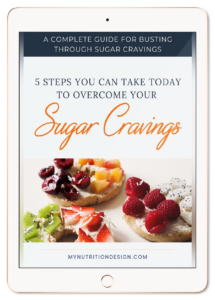Thinking about starting a mindful eating journal but not quite sure where to begin? Do you find yourself wondering if you need a pricey eating journal app, what exactly to jot down, or how often to write?
You’re not alone in these questions, and I’m here to simplify the whole process. And just to clear the air: no, this won’t be about counting calories. That’s not something I believe in!

The Importance of Mindful Eating
Mindful eating is about understanding and connecting with your body’s needs. It’s about enjoying every bite, recognizing when you’re hungry or when you’ve had enough, and most importantly, it’s about removing the stress and guilt often associated with eating. On the surface, it seems simple, but its effects on our well-being can be impressive.
A mindful eating journal is your tool in this journey. Food journaling is not about tracking every calorie, complicated food rules, or measuring every portion – far from it. It’s about noting your feelings, your body’s signals, and your overall experience with food. Whether you prefer pen and paper or a digital app, the goal remains the same: to gain a deeper understanding of your relationship with food and how it relates to weight gain, weight loss, and weight management.
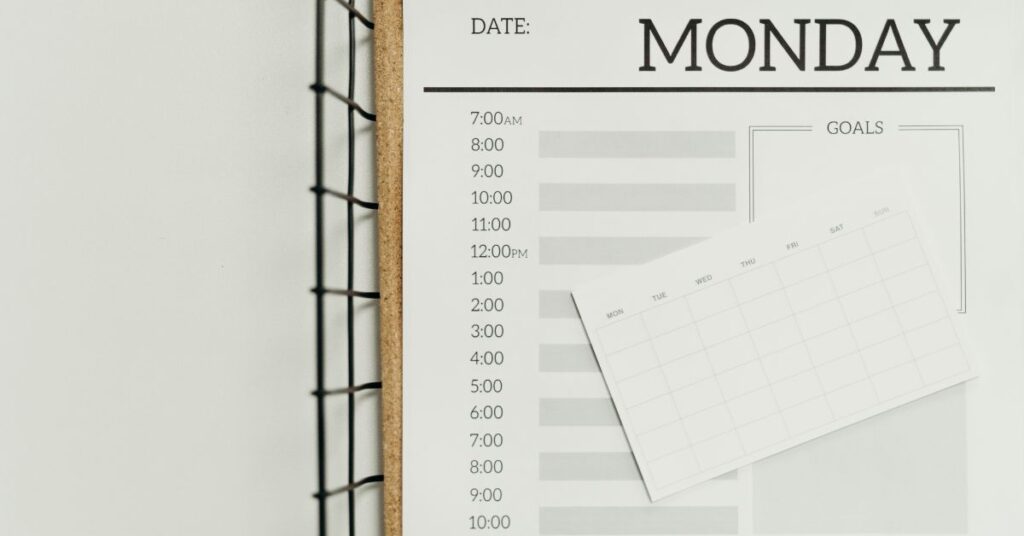
What is a Mindful Eating Journal?
When I work with clients privately, one of the tools I often introduce is the mindful eating journal. But what exactly is it?
A mindful eating journal is more than just a diary of what you eat. It’s a dedicated space where you record not only your meals but also your feelings, thoughts, and observations related to food. Its purpose is to foster a deeper connection between you and your eating habits, helping you understand the ‘why’ behind your food choices.
The benefits of a mindful eating journal:
Self-awareness: By jotting down your meals and feelings, you become more aware of your eating patterns, helping you identify triggers, foods, or habits you might want to address.
Mindfulness: The act of writing encourages you to be present, making you more attuned to your body’s hunger and fullness cues.
Accountability: Having a record of your eating habits can motivate you to make healthier choices, not out of obligation, but out of genuine desire for well-being. According to a study by the American Society for Nutrition, maintaining a food journal can significantly aid in understanding and improving one’s eating habits.
Emotional Understanding: Recognizing the emotions tied to certain foods or eating habits can be enlightening, helping you navigate emotional eating.
Celebration of Progress: Over time, you can look back and see how far you’ve come, celebrating small victories along the way.
In my years of practice, I’ve seen firsthand how this simple tool can lead to profound insights and lasting change. It’s not about perfection; it’s about understanding and growth.

Why Mindful Eating Matters
Mindful eating might seem like a trendy term, but its roots run deep, and its impact on our health and well-being is undeniable. So, why does it matter so much?
Connection Between Mindfulness and Eating
Mindfulness, at its core, is about being present in the moment. It’s about fully engaging with whatever we’re doing, without judgment. When we apply this principle to eating, it transforms our relationship with food.
Instead of mindlessly munching on a snack while watching TV or scrolling through our phones, we pay attention. We savor each bite, appreciate the flavors, and listen to our body’s signals. This connection allows us to recognize when we’re genuinely hungry and when we’re satisfied, reducing the chances of overeating or eating out of boredom or stress.
The Impact on Eating Habits, Health, Weight Loss, and Overall Well-being
Improved Digestion: When we learn to eat mindfully, we tend to eat slower. This not only aids in digestion but also allows our body the time to signal when it’s full.
Reduced Overeating: By paying attention to our body’s cues, we can better gauge when we’ve had enough, in turn leading to healthier portion sizes.
Better Nutrient Absorption: Being present during meals means we’re more likely to make balanced food choices, ensuring our body gets the nutrients it needs.
Emotional Balance: Recognizing and addressing emotional eating can lead to a shift to a more balanced and healthy relationship with food, where we eat for nourishment rather than comfort.
Sustainable Weight Management: According to the Harvard T.H. Chan School of Public Health, mindful eating promotes a sustainable approach to both weight loss and management. It’s not about restriction; it’s about awareness, understanding, and making informed choices.
Enhanced Enjoyment: When we savor our food, we derive more pleasure from it. Meals become an experience, not just a routine.
In my practice, I’ve seen how integrating mindfulness into eating habits can lead to profound changes, not just in terms of nutrition and physical health but also in one’s overall well-being and positive relationship with food.
How to Create Your Own Mindful Eating Journal
Imagine this: It’s a Sunday afternoon, and you’re preparing for the week ahead. You’ve decided to finally take mindful eating seriously, and you’re excited to start your very own Mindful Eating journal. But where do you begin? What materials do you need?
Let’s break it down:
1. Physical Journal vs. Digital (Food Journal App)
Physical Journal: There’s something inherently personal about writing by hand. It feels intimate, almost like you’re having a conversation with yourself. A physical journal can be any notebook you have lying around, or you can invest in a dedicated notebook just for this purpose.
The tactile experience of writing can enhance the mindfulness aspect, making you more connected to the process. In fact, research has shown that writing by hand increases brain activity in recall tasks over taking notes on a tablet or smartphone. Furthermore, those who write by hand on paper are 25% quicker at note-taking tasks than those who use digital technology. This suggests that the act of physically writing can foster a deeper connection and awareness, which is essential for mindful eating.
Digital Food Journal App: On the other hand, if you’re someone who’s always on the go or prefers the convenience of technology, a digital food journal app might be more your speed. There are numerous apps available that offer features like reminders, mood trackers, and even recipe suggestions. Plus, having your journal on your phone means it’s always with you, making it easier to jot down thoughts or meals in real-time.
Let’s talk about a pen & paper journal or PDF download first and then we will get into the options when it comes to apps for your phone or tablet.
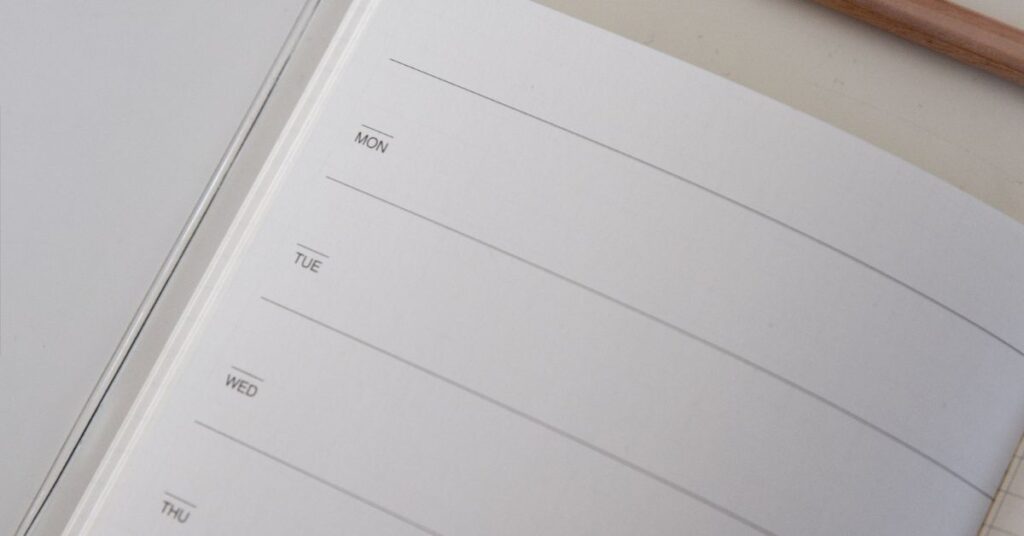
2. Benefits of a Printable Food Journal
A printable food journal strikes a balance between the physical and digital. It’s structured, often with prompts and sections designed specifically for mindful eating.
Here are some benefits:
- Structure: Printable journals often come with predefined sections, making it easier for you to fill out and track your meals and emotions.
- Flexibility: You can print as many pages as you need, allowing you to customize the length and layout of your journal.
- Tangibility: Like a physical journal, there’s a tactile element to a printable journal. You can write, doodle, or even paste pictures, making it a more interactive experience.
- Portability: You can fold it, put it in your bag, or even pin it on your fridge. It’s there as a constant reminder of your mindful eating journey.
Starting a mindful eating journal doesn’t require fancy tools or a significant investment. It’s about finding what works best for you, whether that’s a beautiful leather-bound notebook, a user-friendly app, or a printable PDF template. The key is consistency and commitment to the process.
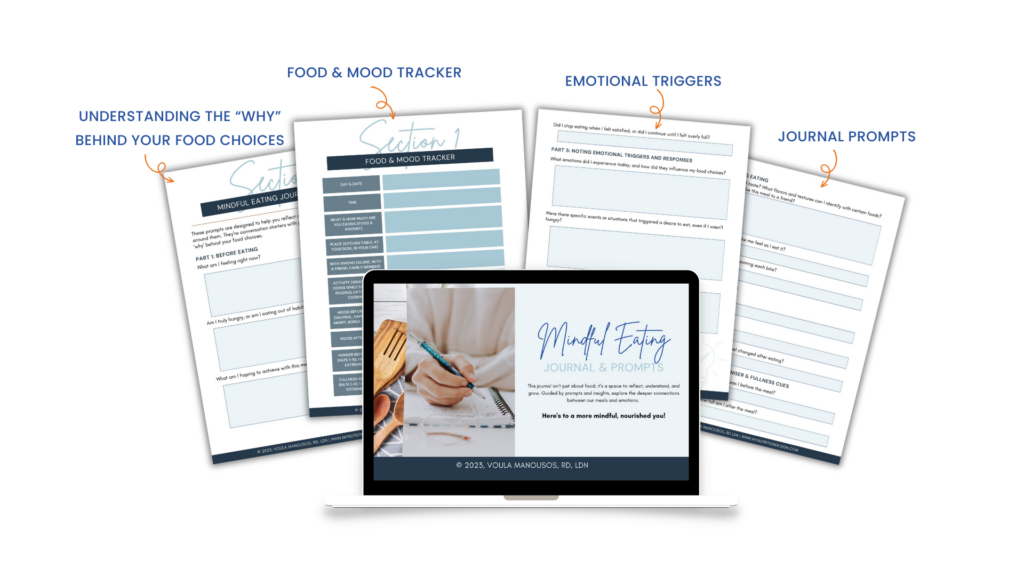
Setting Up Your First Journal
So, you’ve chosen your preferred journaling method, be it a physical notebook, a digital app, or a printable template. Now comes the exciting part: setting it up to best serve your mindful eating journey.
Designing a Mindful Eating Journal Template
The layout of your journal can significantly influence your food journaling experience. Here’s a basic structure to consider:
- Date: Start with the date at the top of each entry. It helps track your progress over time.
- Meals: Divide this section into breakfast, lunch, dinner, and snacks. List down what you ate, portion sizes, and any immediate reactions or feelings.
- Water Intake: Keeping track of your hydration can be beneficial, especially if you’re trying to drink more water throughout the day.
- Notes: A space for any additional observations or thoughts about your meals or day in general.
Incorporating a Food and Mood Section
One of the core principles of mindful eating is understanding the emotional aspect of our food choices. This section can be invaluable!
- Mood Before Eating: Were you feeling stressed? Sad? Happy? Bored? Jot it down.
- Mood After Eating: Did your mood change after the meal? Did you feel satisfied, guilty, or perhaps energized?
- Triggers: Note any external factors that might have influenced your eating. Were you at a social gathering? Did you skip a meal and felt ravenous later?
Adding Sections for Exercise (Food and Exercise Journal)

While the primary focus is on mindful eating, incorporating an exercise section can provide a holistic view of your well-being:
- Type of Exercise: Whether it was a brisk walk, a yoga session, or a basketball game, jot it down.
- Duration: Note how long you exercised.
- Intensity: Was it a light, moderate, or intense workout?
- Feelings Post-Exercise: How did you feel after the workout? Energized? Exhausted? Proud?
Remember, the goal isn’t to create a perfect journal but to design one that resonates with you and supports your journey. It’s a tool, a companion, in your quest for a healthier relationship with food and yourself.
Mindful Eating Journal Prompts
Starting a new habit can be overwhelming, especially when it feels like there’s so much to consider. The beauty of a mindful eating journal is its flexibility. You don’t have to fill out every section every day. To help you ease into this practice, here are some simple prompts to guide your reflections. Think of them as conversation starters with yourself.
Questions to Ask Yourself Before, During, and After Meals
Before Eating:
What am I feeling right now?
Am I truly hungry, or am I eating out of habit, boredom, or emotion?
What am I hoping to achieve with this meal (e.g., satiety, comfort, energy)?

During Eating:
How does the food taste? What flavors and textures can I identify with certain foods? How would I describe this meal to a friend?
How does this food make me feel as I eat it?
Am I eating slowly and savoring each bite?
After Eating:
How satisfied do I feel?
Did I enjoy the meal?
How has my mood or energy level changed after eating?
Reflecting on Hunger and Fullness Cues
On a scale of 1 to 10, how hungry was I before the meal?
On a scale of 1 to 10, how full am I after the meal?
Did I stop eating when I felt satisfied, or did I continue until I felt overly full?
Noting Emotional Triggers and Responses
What emotions did I experience today, and how did they influence my food choices?
Were there specific events or situations that triggered a desire to eat, even if I wasn’t hungry?
How did I feel after eating in response to an emotion?
Starting with these basic prompts can make the process feel less overwhelming. As you grow more comfortable with journaling, you can expand on these questions and delve deeper into your reflections.
Remember, the goal isn’t to have a perfect record but to develop a better understanding and awareness of your relationship with food. And as we’ll explore later, there are plenty of ways to make this journey even more engaging and enjoyable.
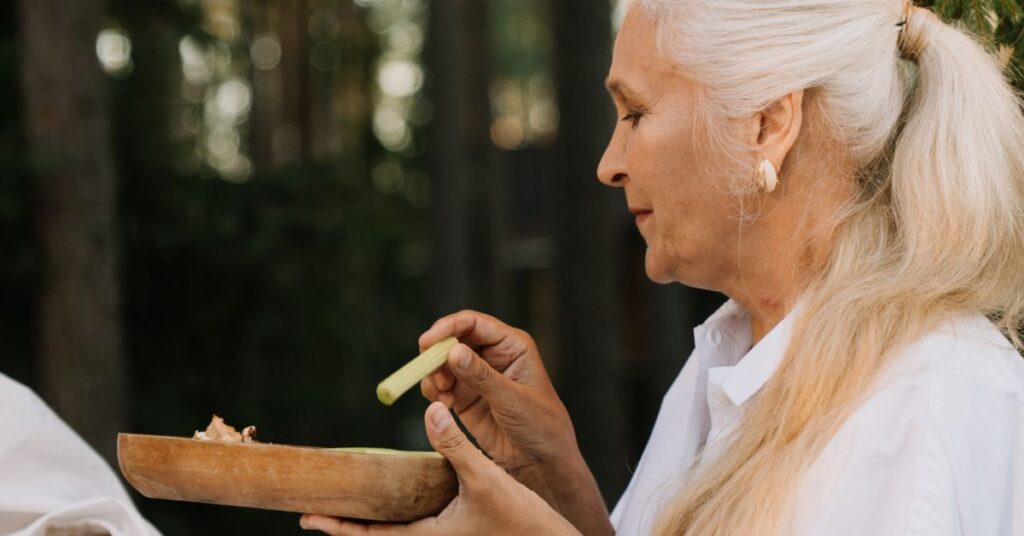
Free Resources to Get Started
Your mindful eating journey can feel like a significant commitment, but with the right resources, it becomes a fun and insightful addition to your daily routine. One of the resources I often recommend to my clients is my downloadable Mindful Eating Journal PDF.
Once downloaded, you can access the journal anytime, anywhere, without needing an internet connection.
This PDF format allows you to tailor the journal to your needs. Whether you want to print multiple pages of a particular section or skip some parts altogether, the choice is yours.
For those who love tech, you can easily integrate the PDF with apps like GoodNotes, making it a dynamic tool where you can add annotations, highlights, and even digital stickers.
How to Use and Customize:
- Download the PDF: The first step is to download the Mindful Eating Journal PDF. It’s designed with all the sections we’ve discussed, from meal tracking to mood reflections.
- Decide on the Format: You can print it out for a tangible journaling experience, use it digitally on a tablet or computer, or even integrate it into note-taking apps.
- Make It Yours: Add personal touches. If you’re using it digitally, change the font, add colors, or even include pictures. If you’re going the printed route, use colored pens, stickers, or even washi tape to make it visually appealing.
- Start Journaling: Begin with the prompts provided, and as you get more comfortable, feel free to add sections or prompts that resonate with you.
Remember, the goal of the Mindful Eating Journal PDF is to provide a structured yet flexible framework. It’s a starting point, a guide. As you progress in your mindful eating journey, you’ll find what works best for you, and this resource will adapt right alongside you.
Enhancing Your Journaling Experience
While the primary purpose of a mindful eating journal is to deepen your connection with food and self, who says it can’t be fun and creative?
Here are some ideas to elevate your journaling experience, making it not just a routine but a relaxing activity you look forward to.
Creative Ways to Make Journaling Fun and Engaging
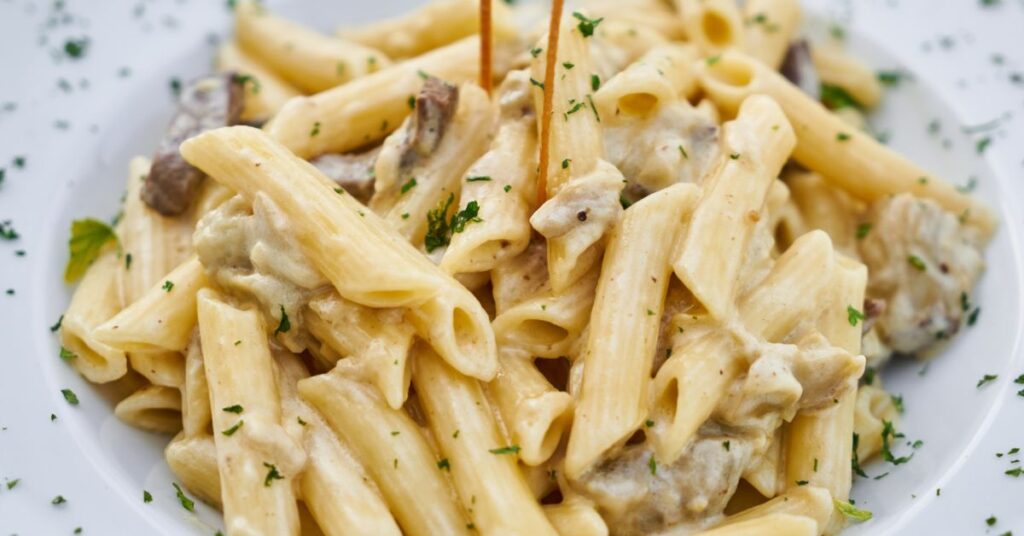
Themed Weeks: Dedicate each week to a specific theme. For instance, one week could be “Exploring New Cuisines,” where you try a new dish every day and journal about the experience. Another week could be “Colorful Meals,” focusing on incorporating as many colors as possible in your meals.
Recipe Corner: Dedicate a section where you jot down new recipes you’ve tried or want to try. Add a rating system to remember which ones you loved and which ones you’d tweak next time.
Doodle Your Meals: Instead of just writing about your food, why not sketch it? It doesn’t have to be a masterpiece; simple doodles can add a fun visual element to your journal.
Quotes and Affirmations: Add motivational quotes or personal affirmations to your journal. These can serve as daily reminders of your commitment to mindful eating and self-love.
Incorporating Visuals, Stickers, and Colors
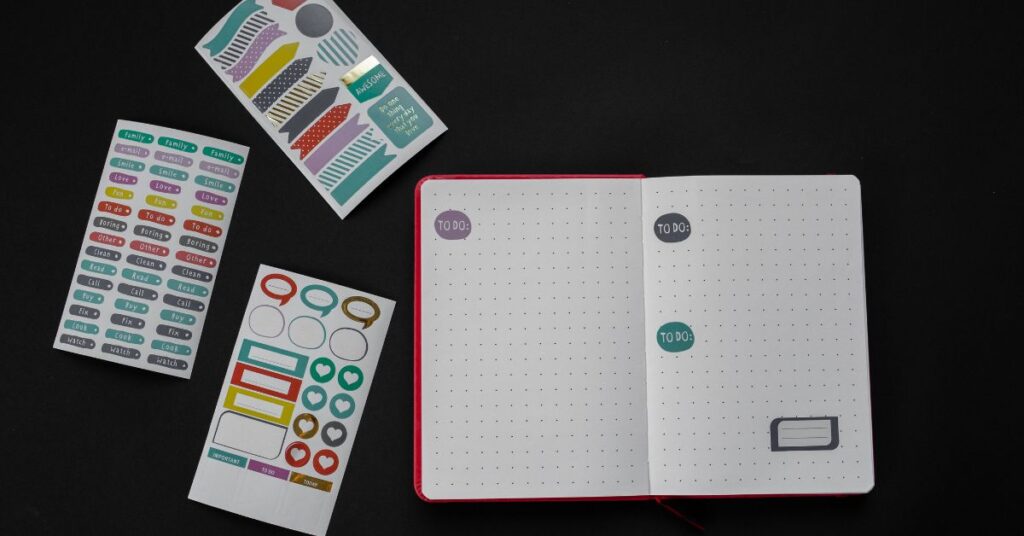
Photo Journaling: Snap a picture of your meals and paste them into your journal. It’s a visual record that can be fun to look back on. Plus, it might motivate you to plate your food more attractively!
Sticker Fun: There are countless stickers available, from cute food items to motivational quotes. They can add a pop of color and fun to your pages.
Color Coding: Use different colored pens or highlighters for various sections or moods. For instance, blue can represent calm and content moods, while red might indicate days you felt stressed or anxious.
Washi Tape: These decorative tapes can be used to create borders, divide sections, or simply add a splash of design to your pages.
Remember, the goal is to make the journaling process enjoyable. When you look forward to journaling, you’re more likely to stick with it, reaping all the benefits of mindful eating. So, let your creativity run wild and make your journal uniquely yours!
Now let’s delve into the world of digital alternatives for mindful eating journaling.
Digital Alternatives: Food Journal Apps
These days, it’s no surprise that many are turning to digital solutions for their journaling needs.
Food journal apps, in particular, have seen a surge in popularity. Let’s identify what to look for when choosing the right app for you.

Benefits of Using an App:
- Convenience: With smartphones being a constant companion for most, having your journal in app form means it’s always within reach. Whether you’re at a restaurant, at work, or traveling, you can easily log your meals and reflections.
- Reminders: Most apps come with a reminder feature, ensuring you never forget to make an entry. This can be especially helpful when you’re trying to establish a new habit.
- Analytics: Many apps offer insights and analytics, giving you an overview of your eating patterns, mood correlations, and more.
- Integration: Some apps can integrate with other health and fitness apps, providing a holistic view of your well-being, from diet to exercise to sleep.
Features to Look for in a Food Journal App:
- User-Friendly Interface: The app should be intuitive and easy to navigate. You don’t want to spend more time figuring out the app than journaling.
- Customizability: The ability to tailor the app to your needs, from the layout to the type of prompts, is crucial.
- Privacy and Security: Ensure the app has robust privacy settings, especially if you’re sharing personal information.
- Mood Tracking: Since mindful eating is closely tied to emotions, an app that allows mood tracking alongside meal entries can be beneficial.
- Cloud Syncing: This ensures that your entries are safe and accessible across multiple devices.
- Community or Support Features: Some apps offer a community feature where you can share experiences, ask questions, or even participate in challenges.
Recommendations:
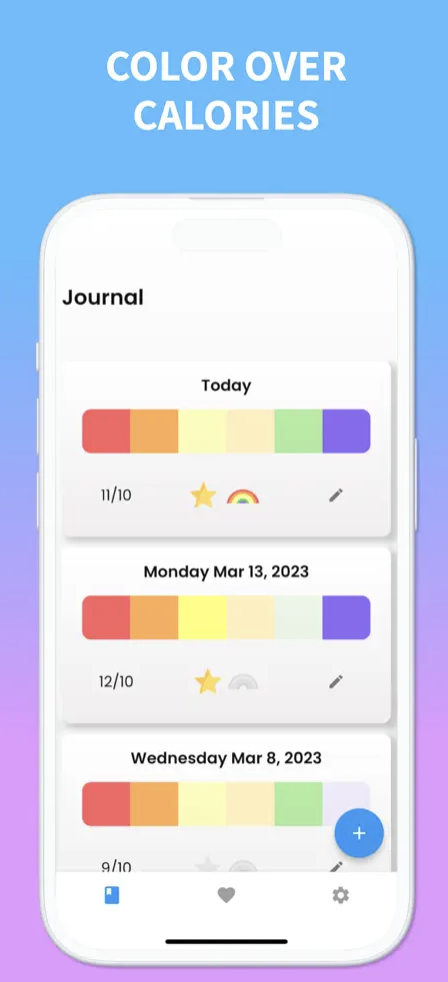
- Rainbow Diet Journal
-
- From the creator: Introducing Rainbow Food Journal – the top “rainbow diet” meal tracker. It’s a fun and free way to boost your health and immunity by adding color to your existing diet! Rainbow Diet Journal helps you track your daily plant-based food intake and visualize your progress towards optimal nutrition. Unlock unicorn status by eating the rainbow each day or week, and earn gold stars as you reach your goals!
-
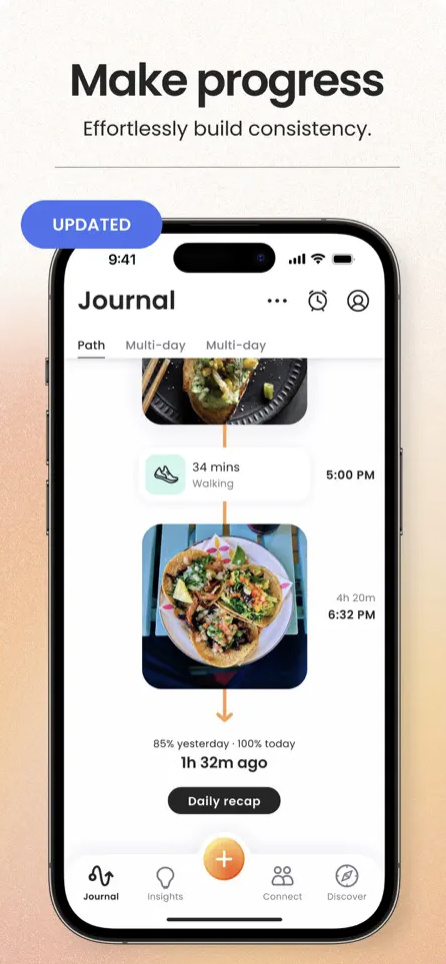
- Ate Food Journal
- From the creator: Identifying eating patterns and being consistent made easy. Photo journal lets you track food in 3 taps.
- Google Play Store
- App Store
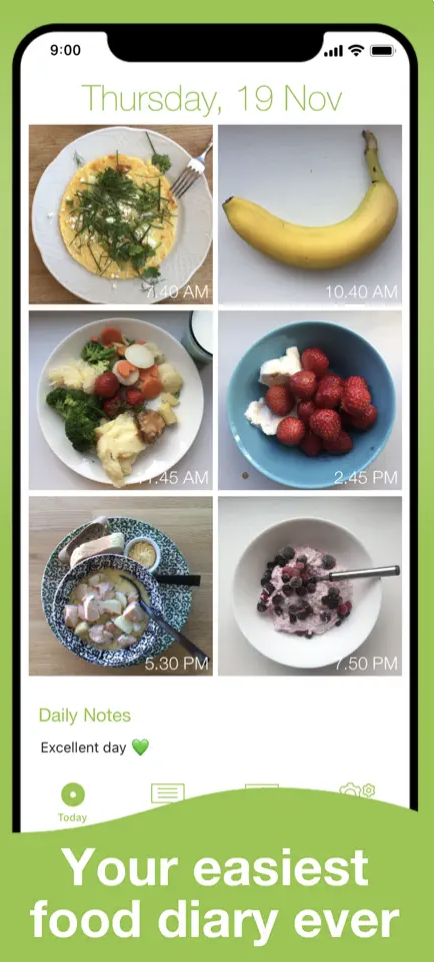
- See How You Eat
- From the creator: a simple yet effective food diary to help you discover the ease and enjoyment of a healthy diet.
- Google Play Store
- App Store
While apps offer convenience and a host of features, remember that the best tool is the one you’ll use consistently.
Whether you opt for a traditional journal, a printable PDF, or a digital app, the key is to find what resonates with you and supports your mindful eating journey.
Tips on How to Keep a Mindful Eating Journal Consistently
Starting a mindful eating journal is one thing, but keeping up with it consistently? That’s where the real challenge often lies.
I get it; life gets busy, and sometimes even the best intentions can fall by the wayside. But here’s the thing: consistency is the key to understanding and transforming your relationship with food.
According to research from the USU Extension Services, consistent mindfulness practices, including journaling, can enrich the eating sensory experience and reduce less healthy food consumption.
So, how can you make journaling a regular part of your life?
First and foremost, carve out a dedicated time each day for your journaling. It doesn’t have to be an hour-long session; even just a few minutes can make a difference. Maybe it’s in the morning with your cup of coffee, during your lunch break, or as a wind-down activity before bed.
Find a time that feels natural and stick to it. By making it a daily ritual, it becomes less of a task and more of an enjoyable moment of reflection.

Next, consider integrating journaling into your mealtime routine. Just as you set the table before eating, take a moment to have your journal by your side. It can be a gentle reminder to be present during your meal, to savor each bite, and to jot down your thoughts and feelings afterward. Over time, reaching for your journal will become as second nature as reaching for your fork.
Lastly, set aside some time each week to review and reflect on your entries. This isn’t about critiquing yourself or feeling guilty about any food choices. Instead, it’s an opportunity to observe patterns, celebrate progress, and set intentions for the week ahead. Maybe you’ll notice that you often reach for sugary snacks when you’re stressed or that you feel more energized when you have a protein-rich breakfast.
These insights, knowledge, and strategies are invaluable and can guide you in making mindful choices that align with your well-being.
The journey to mindful eating is a personal one, and there’s no one-size-fits-all approach. It’s about finding what works for you, being kind to yourself, and celebrating the small victories along the way. And trust me, with time, focus, and consistency, the insights and transformations you’ll experience will be well worth the effort.
Conclusion
As we come to the end of this post, I want to emphasize the transformative power of mindful eating and journaling.
It’s more than just noting down what you eat; it’s about understanding your relationship with food, recognizing patterns, and making choices that nourish both your body and soul.
Over the years, I’ve seen countless individuals, including many of my clients, experience profound shifts in their well-being, simply by being more present and intentional with their meals.
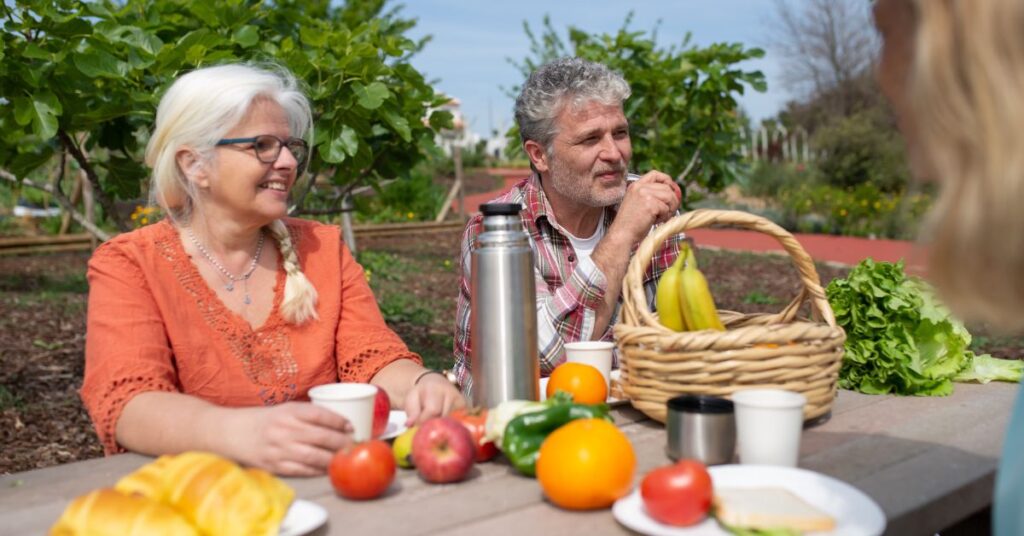
If there’s one thing I hope you take away from this, it’s the understanding that every meal is an opportunity. An opportunity to connect, to savor, and to grow. And while starting a new habit can feel like a chore, remember that every journey begins with a single step. So, I encourage you: take that step. Embrace the practice of mindful eating and journaling, and watch as it unfolds a world of insights, growth, and joy.
Ready to start your own Mindful Eating Journal?
To support you, I’ve created a free printable food journal PDF tailored for mindful eating. Whether you’re looking to manage weight or simply deepen your understanding of your eating habits, this food journaling download is designed to guide you every step of the way. You can print it out, use it on your tablet, or simply draw inspiration for your own journaling notebook.
And if you’re looking for more personalized recommendations or have questions about mindful eating, I’m here to help. Book a call with me, and together, we’ll chart a path that aligns with your unique needs and aspirations.
Here’s to mindful moments, delicious meals, and a deeper connection with ourselves!





